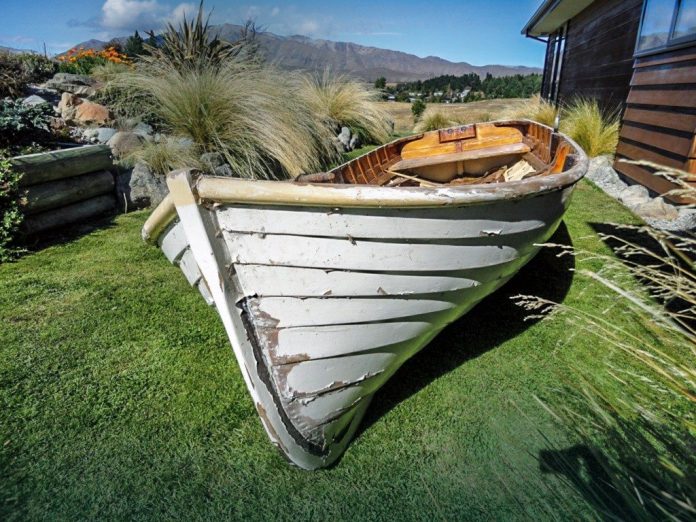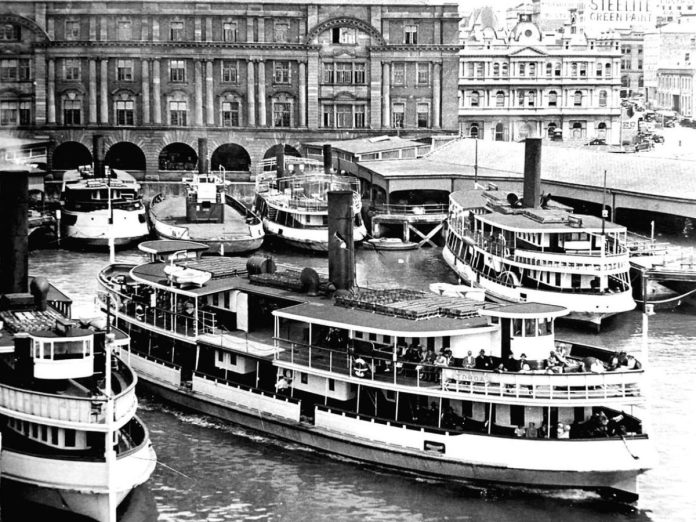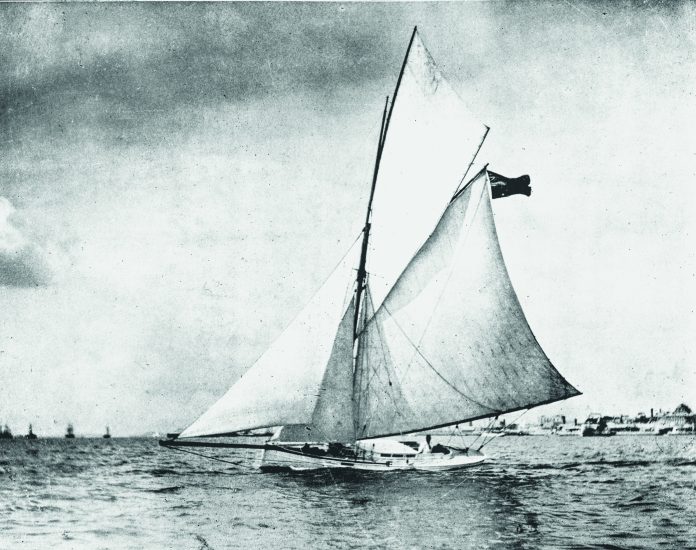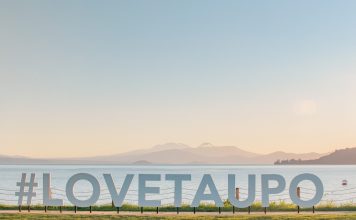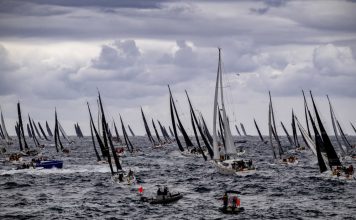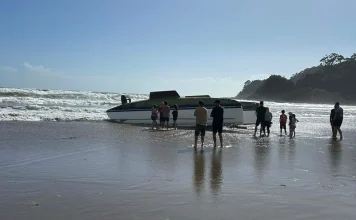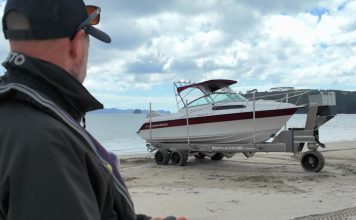A northern problem
Two thousand years ago, Northern Europe’s waters punished weak boats. Dugout canoes carved from oak were heavy and slow, prone to splitting. Rafts floated but were unwieldy in surf. Sewn-plank boats leaked as fibres stretched in the wet, cold climate.
The North and Baltic Seas demanded something tougher. Tides raced through narrows, storms raised steep chop, and shallow beaches meant boats had to be hauled ashore daily. Builders needed a hull that was strong, light, and flexible — able to carry warriors, settlers, or traders across open water.
The answer was the clinker: overlapping strakes fastened with nails and clenched over roves. Built shell-first, each plank shaped the hull’s form. The overlaps stiffened the structure without adding weight, and the hull flexed just enough to survive hard seas. It was a northern solution to a northern problem.
The first clinker boats
The transition is visible in early archaeology. The Björke boat (c. 310 AD) from Sweden shows the move from extended dugout to true planked hull. Soon after came the Nydam boat (c. 320 AD), the earliest almost complete clinker-built vessel we know.
Its oak planks overlapped and were fastened with iron nails clenched over roves inside the hull. Reinforcing frames were added later, once the shell was complete — a hallmark of the technique. Seen up close, clinker planking shows a distinctive stepped look, each fastener driven through the overlap and hammered home without glue or mastic.
How clinker works
Clinker construction looks simple but demands patience and the right tools. Forum discussions suggest a ball-pein hammer, a drift for roving, and pinchers to cut copper nails.
A new clinker boat is watertight thanks to tight laps and clenched fastenings. But wood is alive. After winter storage, the planks dry and shrink. Relaunching in spring often means hours of pumping while the boat “takes up.” At first the leaks look alarming, then suddenly the laps swell, the joints tighten, and the hull seals. Splits sometimes form along rivet lines, but repairs are straightforward: remove the plank, use it as a template, and re-rove with fresh copper. With care, a clinker boat can last for generations.*
Vikings and medieval traders
By the 7th century, clinker boats were widespread across Scandinavia and Anglo-Saxon England.
The Viking longships of the 8th–10th centuries perfected the form. Archaeological finds like the Oseberg and Gokstad ships reveal long, fine-ended hulls that could be rowed fast, sailed across open seas, and portaged across land. Broader-beamed cargo craft — knarrs — carried goods, settlers, and livestock as far as Iceland, Greenland, and Vinland.
In the 10th century, the cog appeared. A square-rigged, clinker-built vessel with flat bottom and high sides, it became the standard trading ship of the North German merchant Hanseatic League. Typical cogs were 15–25m long, carrying 30–200 tons of cargo. They extended the reach of Northern Europe’s trade and influence.
UNESCO recognised clinker boatbuilding in 2021 as part of the Intangible Cultural Heritage of Humanity, noting its role in shaping Nordic identity.
Migration to Australasia
Wherever Europeans migrated, clinker boatbuilding followed. By the 19th century, the method was well established in both Australia and New Zealand.
In New Zealand, builders quickly saw the value of local timbers. Kauri, straight-grained and strong, made excellent planking. Pohutukawa, with naturally curved branches, provided robust knees. With these woods, clinker could be built as well as — or better than — in Europe.
- Percy Vos, Auckland, built clinker dinghies through the 1920s–30s alongside yachts and fishing boats.
- Jack Guard of Nelson launched Valetta, a clinker-built launch, around 1930.
- Jomo Craft of Fairlie turned out around 130 clinker dinghies and small launches in the 1940s–50s, many for Electricity Department use on Tekapo and Alexandrina.
In Australia, Tasmanian builders favoured local natives, Huon pine, King Billy pine, and celery-top pine for their durability. New South Wales firms such as Lewis Bros, Everingham, and Hammond became known for clinker ski boats and runabouts.
Clinkers in naval service
The Montagu Whaler, introduced in 1910, became the standard seaboat of the Royal Navy and Commonwealth navies. At 27ft by 6ft, clinker built and double-ended, it could be rowed by oars or rigged for sail. In New Zealand, naval whalers remained in service until at least the 1960s, with some accounts suggesting use into the 1990s.
Many Kiwis still remember pulling hard on a Montagu’s oars during training, or learning the basics of seamanship under sail in these rugged clinker service boats.
The New Zealand clinker story
The Tino Rawa Trust’s 2017 book The New Zealand Clinker Boat captures the breadth of local clinker heritage: from tenders to centre-boarders like the Frostbite, Silver Fern, International 14, and M Class, through to racing skiffs and naval whalers.
Stories abound. At Lake Rotoiti’s Antique & Classic Boat Show, clinkers appear in force alongside steam launches and speedboats. Waitemata Woody‘s note that in 2019, Aurora, a 1935 kauri clinker, took top honours after restoration by Nelson’s David Gollop. Once an explosives lighter, she now gleams with varnish and carries a Stuart Turner petrol engine.
Lake Tarawera retro boats gathering set for another sell-out success
Another tale is George Empson’s: as a boy in the 1950s, he helped patch his father’s storm-damaged Fairlie clinker. Decades later, he stumbled across the same boat still afloat on Lake Alexandrina, tarred seams and all.
For New Zealand families, clinkers were not just boats — they were companions on fishing trips, training grounds for sailors, and heirlooms linking generations.
Modern clinker
Clinker continues to evolve. The late Iain Oughtred pioneered glued-lapstrake plywood, using epoxy instead of rivets. His designs inspired the St. Ayles Skiff, a community rowing class now built and raced worldwide.
British designer Paul Gartside draws traditional-inspired clinker craft. In Taupō, Mark Dumble recently launched The Daphne G, a Gartside skiff built in glued lapstrake with marine ply and sapele. Adapted for trout fishing, fitted with a 25hp Yamaha, and painted ivory white, it proves clinker can still be practical and modern.
More than a method
Clinker boats solved a northern problem: how to make seaworthy craft from small trees in rough seas. But they became much more.
In Australasia, local natives gave new life to the method. Kiwi builders turned out whalers, dinghies, and racing classes. Families restored them, rowed them, and passed them down.
Today, whether riveted oak or epoxy ply, clinker boats remain a living link between craft, seaworthiness, and heritage. Their stepped lines and rhythmic planking speak of the builders who shaped them, the waters they survived, and the people they carried further than they thought possible.








